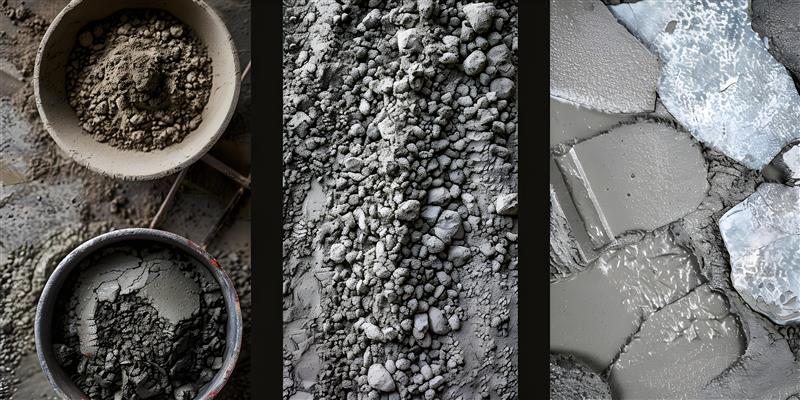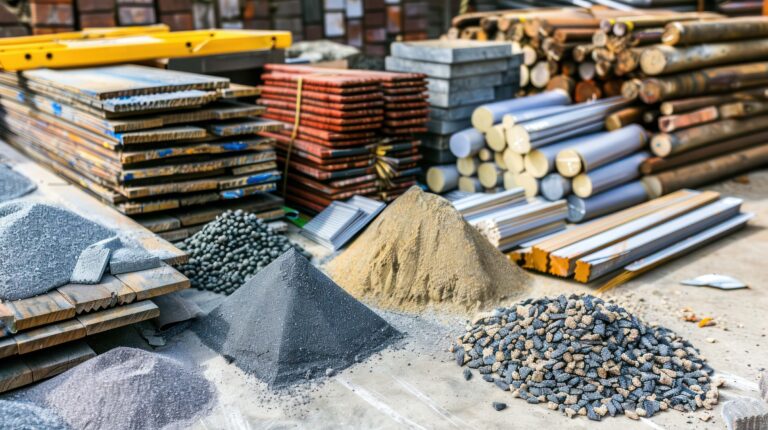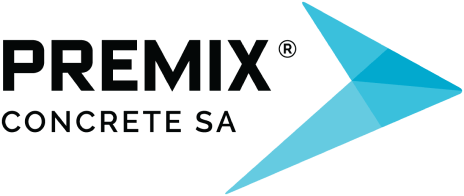Exploring Different Types of Concrete Mix and Their Benefits

Concrete is one of the world’s most widely used building materials, known for its durability, strength, and versatility. However, not all concrete is the same—various mixes are designed to meet specific structural and aesthetic requirements. From standard mixes for everyday construction to specialized blends for decorative purposes, understanding the different types of concrete can help you choose the right one for your project.

Different Types of Concrete Mix
1. Plain Concrete (Normal Strength Concrete)
Overview:
Plain concrete, known as regular strength concrete, is the most straightforward and commonly used mix. It consists of cement, sand, and aggregate in a standard ratio 1:2:4, mixed with water. This type of concrete is widely used for basic construction applications where high tensile strength isn’t a critical requirement.
Uses:
- Pavements and walkways
- Flooring for residential and commercial buildings
- Simple foundations and non-load-bearing structures
Benefits:
Easy to mix and apply
Cost-effective for large-scale projects
Suitable for applications that don’t require reinforcement
2. Reinforced Concrete (RC)
Overview:
Reinforced concrete is an enhanced version of plain concrete that includes steel bars, mesh, or fibers to improve its tensile strength and load-bearing capacity. This makes it a popular choice for structures requiring extra durability and resilience.
Uses:
- Bridges, tunnels, and overpasses
- High-rise buildings and structural foundations
- Beams, columns, and slabs in construction
Benefits:
Greater tensile strength and crack resistance
Long-lasting and highly durable
Can withstand heavy loads and harsh weather conditions
3. Decorative Concrete – Stylecrete by Premix Concrete
Overview:
Unlike traditional concrete used for structural purposes, decorative concrete focuses on aesthetics and functionality. It can be enhanced using different textures, colors, finishes, and patterns to create visually appealing surfaces.
Premix Concrete supplies over 40 different mixes of Stylecrete, all manufactured to Australian standards and available in various finishes to suit different architectural styles.
Types of Decorative Concrete:
- Stamped Concrete: Mimics the look of brick, stone, or wood through textured patterns.
- Colored Concrete: Pigments or dyes are added to achieve various colors.
- Polished Concrete: A smooth, high-gloss finish achieved through mechanical grinding and polishing.
- Colored exposed aggregate concrete: A popular decorative style where the top layer is removed to reveal stones, quartz, or gravel beneath, giving a unique textured appearance.
Uses:
- Driveways, patios, and walkways
- Interior flooring with a modern aesthetic
- Pool decks and outdoor landscaping
Benefits:
Enhances the visual appeal of structures
Low maintenance compared to traditional flooring
It can be customized for unique design preferences
Supplied by Premix Stylecrete Concrete, ensuring top-quality materials and expert
Craftsmanship
4. High-Strength Concrete (HSC)
Overview:
High-strength concrete is designed for projects that demand extra compressive strength. It is created using a lower water-to-cement ratio and often includes silica fume or fly ash to enhance its durability.
Uses:
- Skyscrapers and commercial buildings
- Bridge construction and heavy infrastructure
- Industrial floors are exposed to extreme loads.
Benefits:
Exceptional strength and load-bearing capacity
Increased resistance to environmental factors
Longer lifespan than standard concrete
5. Lightweight Concrete
Overview:
Lightweight concrete incorporates lightweight aggregates like pumice, expanded clay, or perlite, reducing the structure’s overall weight while maintaining strength.
Uses:
- Roofing and insulation
- Bridge decks and precast wall panels
- Decorative elements in architecture
Benefits:
Reduces structural load
Improves thermal and sound insulation
Easier to transport and handle on-site
6. Ready-Mix Concrete (RMC)
Overview:
Ready-mix concrete is pre-mixed at a batching plant and transported to construction sites in transit mixers. It eliminates the need for on-site mixing, ensuring consistency and efficiency.
Uses:
- Large-scale construction projects
- Residential and commercial building foundations
- Infrastructure projects with strict quality control
Benefits:
Time-saving and efficient
Ensures consistent quality and strength
Reduces material wastage
7. Precast Concrete
Overview:
Precast concrete elements are manufactured in a controlled environment before being transported and assembled on-site. This method allows for faster construction and improved quality control.
Uses:
- Beams, columns, and panels
- Precast staircases and boundary walls
- Bridges and drainage systems
Benefits:
Faster installation and reduced labor costs
Higher precision and uniformity
Enhanced durability and weather resistance
8. Self-Consolidating Concrete (SCC)
Overview:
Self-consolidating concrete is a highly flowable mix that spreads into place without requiring mechanical vibration. It is ideal for complex formwork and densely reinforced structures.
Uses:
- Architectural structures with intricate designs
- Densely reinforced columns and walls
- Precast concrete elements
Benefits:
Reduces labor costs and work time
Provides a smooth, high-quality finish
Minimizes the risk of voids or honeycombing
10. Polymer Concrete
Overview:
Polymer concrete replaces traditional cement with polymer resin, creating a highly durable and chemical-resistant material.
Uses:
- Industrial flooring and drainage systems
- Repairing and resurfacing damaged concrete
- Applications requiring high resistance to chemicals
Benefits:
Exceptional strength and bonding capabilities
Resistant to water and harsh chemicals
Rapid curing and reduced maintenance requirements

Why Choose Premix Concrete?
Regarding high-quality concrete solutions, Premix Concrete stands out as a leading ready-mix concrete supplier in Adelaide. Their concrete range allows architects, designers, and homeowners to create stunning, long-lasting surfaces beyond standard concrete applications.
What Makes Premix Concrete the Best?
- One of the premier suppliers of decorative concrete is Premix Concrete, whose Stylecrete range offers an extensive selection of colored, polished, exposed, and seeded mixed concrete. Their decorative concrete solutions are designed to bring elegance and sophistication to floors, paths, and driveways.
- All mixes meet Australian standards, ensuring high quality and durability.
- Aesthetic and functional solutions for driveways, patios, walkways, and floors
Whether looking for a reliable structural mix or a decorative solution to enhance your space, Premix Concrete delivers high-performance, beautiful, and durable concrete options tailored to your needs.
Conclusion
Choosing the correct type of concrete mix is essential for ensuring your project’s durability, strength, and aesthetic appeal. Plain concrete is ideal for simple, cost-effective applications, while decorative concrete enhances the visual appeal of spaces. Meanwhile, high-strength, lightweight, and self-consolidating concrete provides specialized solutions for structural and architectural needs.
By understanding the benefits and applications of each type, you can select the most suitable concrete mix to meet your construction goals, ensuring a long-lasting and high-quality result.
